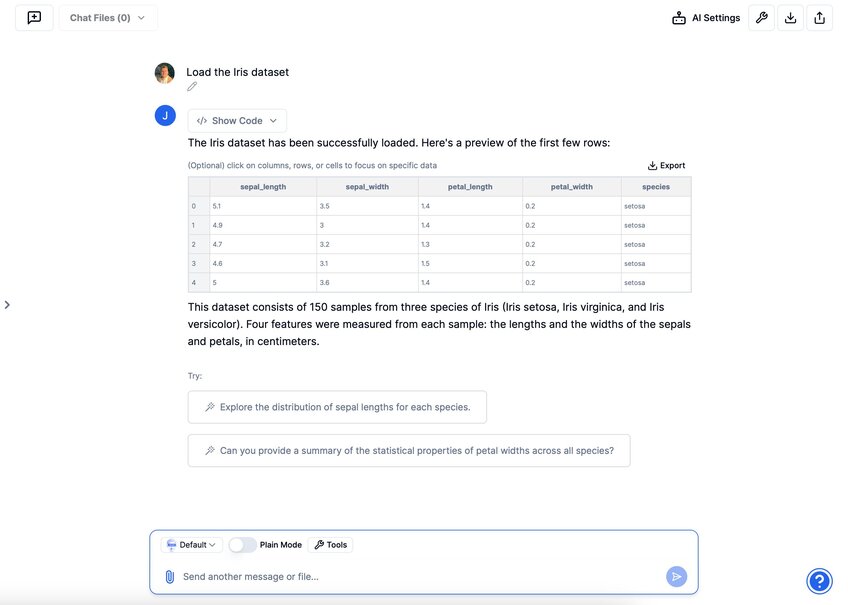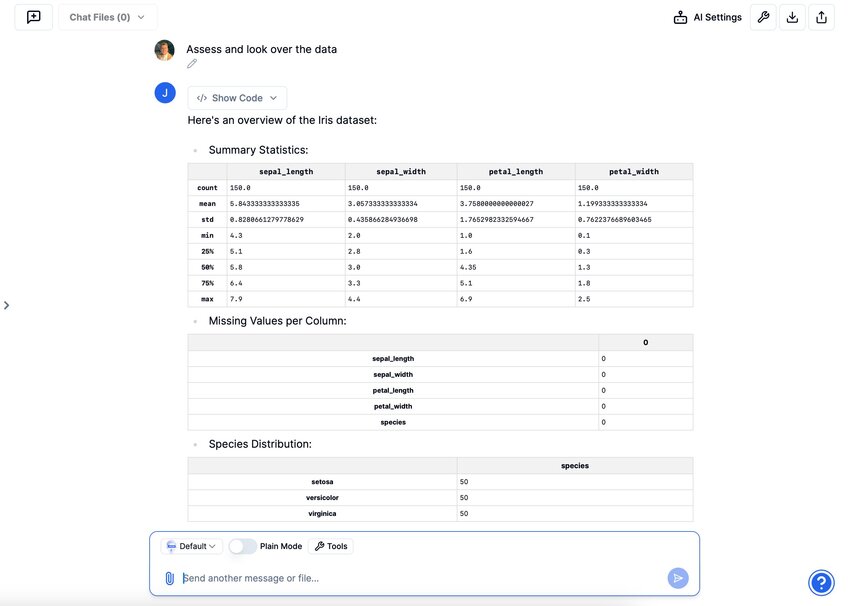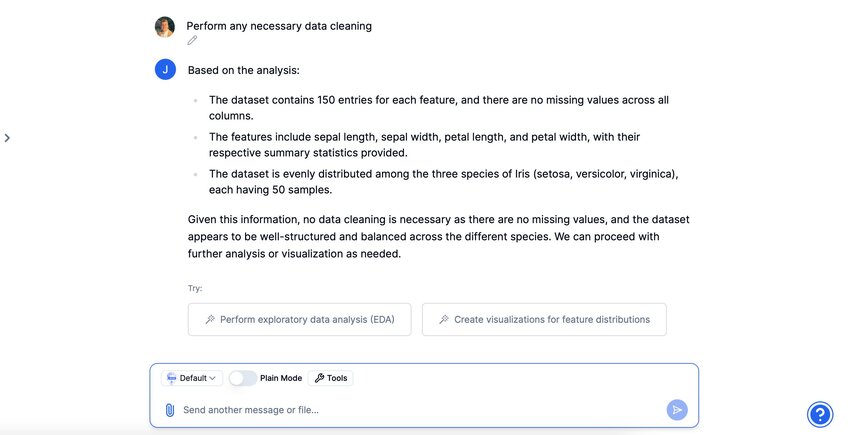July 2nd, 2024
Step-by-Step Guide to Training a Machine Learning Model on the Iris Dataset with Julius
By Alex Kuo · 13 min read

Overview
The Iris dataset is a classic in the field of machine learning, offering a straightforward path for beginners to explore the process of training a machine learning model. It consists of 150 samples from three species of Iris (Iris setosa, Iris virginica, and Iris versicolor), with four features each: sepal length, sepal width, petal length, and petal width. Our goal is to use Julius to classify the Iris plants into one of the three species based on these features as a way to show how you can train machine learning models without having to write any code.
Getting Started

Begin by importing the Iris dataset. Typically, you’d upload a compatible file containing your dataset (CSV, Excel, or Google Sheets). However, since Iris is such a well-known dataset, you can simply prompt Julius to “Load the Iris dataset,” and it will be able to write Python code to pull in the dataset.

Once the dataset is imported, you can prompt an initial assessment to help Julius understand its structure and contents. This includes producing summary statistics, identifying the number of features, recognizing data types, and detecting missing values if any.
Preparing Your Data for Training

With the Iris dataset, minimal cleaning is typically required. However, Julius will check for any missing or inconsistent data entries and propose solutions. For the Iris dataset, ensuring all numeric values are correctly formatted and no entries are missing is key.
In this dataset, all four features are significant for species classification. Julius allows you to review feature importance. However, for educational purposes, you can proceed with all features included.

Before training, split your data into training and testing sets. A common split ratio is 80% for training and 20% for testing. Julius automates this process, ensuring your model is trained on one part of the dataset and tested on an unseen portion for unbiased evaluation.
Training Your Machine Learning Model
For the Iris dataset, a classification model is appropriate. Julius provides various algorithms for classification, such as logistic regression, decision trees, and k-nearest neighbors (KNN). For beginners, KNN is a good start due to its simplicity and effectiveness.
With Julius, configuring your model involves selecting the algorithm (e.g., KNN) and setting any relevant parameters. For KNN, you might start with the default number of neighbors (e.g., 5) and adjust based on performance.

Initiate the training process by instructing Julius to apply the chosen algorithm to your training data. Julius handles the computational work, providing updates on the training progress and completion.
Evaluating Model Performance
After training, Julius presents the model's performance metrics, such as accuracy, precision, recall, and F1 score. These metrics help assess how well your model has learned to classify the Iris species. Since this is a relatively simple model, the accuracy was perfect and each species was identified correctly.
If the initial results aren't satisfactory, you might adjust the model's parameters (e.g., changing the number of neighbors in KNN) or try a different algorithm. Julius facilitates this experimentation, guiding you towards improving model performance.
Conclusion
Training a machine learning model on the Iris dataset with Julius introduces you to the essential steps of machine learning: importing data, preparing it for training, choosing and configuring a model, and evaluating performance. Through this hands-on experience, you gain insights into the practical aspects of machine learning, paving the way for tackling more complex projects.
This guide simplifies the process into manageable steps, ensuring that even those new to machine learning can successfully train a model using Julius. As you grow more comfortable with these steps, you'll find Julius to be an invaluable tool in your machine learning endeavors, capable of handling increasingly sophisticated tasks with ease.
Frequently Asked Questions (FAQs)
Model training in machine learning is the process of teaching an algorithm to recognize patterns in data by feeding it labeled examples. During this phase, the model adjusts its parameters to minimize errors and improve its accuracy in predicting or classifying new, unseen data.
The four main types of machine learning models are supervised learning, unsupervised learning, semi-supervised learning, and reinforcement learning. Each model type is suited for different tasks, such as classification, clustering, or decision-making, based on the availability and nature of the data.
A machine learning model works by processing input data through a set of algorithms to identify patterns and relationships. Once trained on labeled data (in supervised learning) or by discovering structure in unlabeled data (in unsupervised learning), the model makes predictions or decisions based on new input data.
The time to train a machine learning model depends on several factors, including the size of the dataset, the complexity of the model, and the computational resources available. While simple models on small datasets can be trained in seconds, complex deep learning models may take hours or even days to train.
